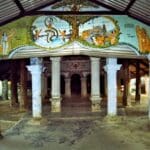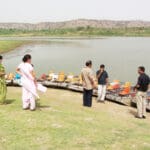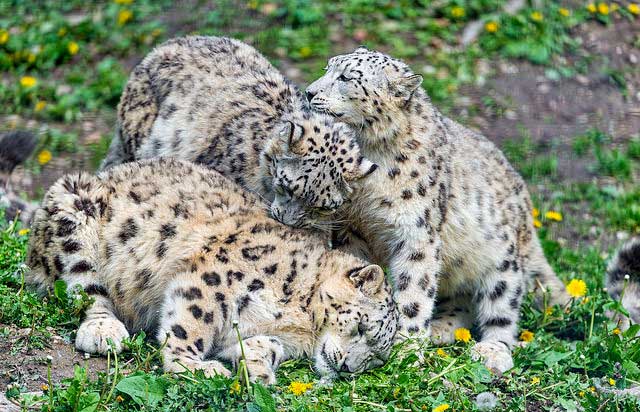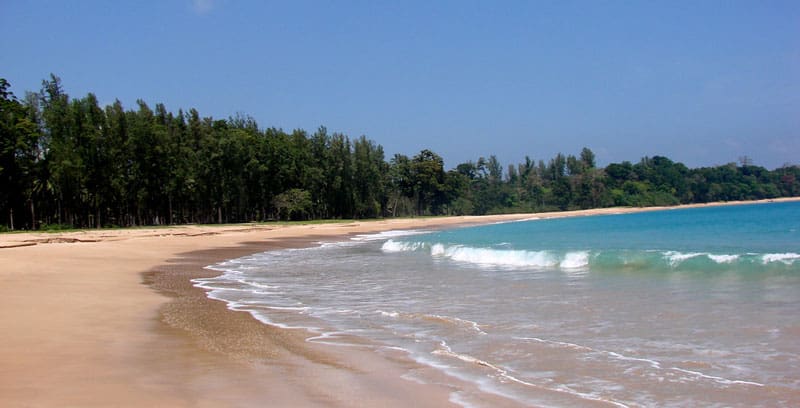Jharkhand, nestled in the eastern part of India, boasts a rich tapestry of culture, history, and natural beauty. Among its many treasures are its national parks, which serve as sanctuaries for diverse flora and fauna. Let’s embark on a journey to discover the top five national parks in Jharkhand, each offering a unique blend of adventure and serenity.
Betla National Park: Where Wildlife Thrives
Betla National Park, located in the Palamu district, is one of the oldest national parks in India. Sprawling over an area of 230 square kilometers, this park is a haven for wildlife enthusiasts. Its dense forests, dominated by Sal trees, provide a perfect habitat for a myriad of species, including tigers, elephants, sloth bears, and leopards. Visitors can embark on safari rides or guided nature walks to catch a glimpse of these magnificent creatures in their natural habitat. Apart from wildlife, Betla National Park is also dotted with picturesque waterfalls, ancient ruins, and tribal villages, offering a holistic experience to travelers.
Hazaribagh National Park: A Serene Retreat
Nestled amidst the serene environs of the Chota Nagpur Plateau, Hazaribagh National Park is a tranquil oasis for nature lovers. Spanning across an area of 184 square kilometers, this park is renowned for its population of Royal Bengal Tigers. Apart from tigers, the park is also home to leopards, sambar deer, wild boars, and a variety of avian species. Travelers can explore the park through jeep safaris or opt for guided treks to immerse themselves in the untouched wilderness. The park’s scenic beauty, encompassing dense forests, lush grasslands, and meandering rivers, makes it a perfect destination for photography enthusiasts and adventure seekers alike.
Palamau Tiger Reserve: A Wilderness Odyssey
Palamau Tiger Reserve, located in the Latehar district, is a paradise for wildlife enthusiasts and nature lovers. Spanning across an area of 1,129 square kilometers, this reserve is one of the largest contiguous tracts of forests in India. It is home to a diverse range of flora and fauna, including the majestic Bengal Tiger, Indian wild dog, sloth bear, and gaur. Travelers can embark on thrilling jungle safaris, nature walks, and birdwatching expeditions to explore the reserve’s untamed beauty. The reserve also boasts several scenic spots, such as the picturesque Betla Gorge and the ancient ruins of Palamau Fort, adding to its allure.
Dalma Wildlife Sanctuary: Where Nature Flourishes
Dalma Wildlife Sanctuary, nestled amidst the scenic Dalma Hills, is a hidden gem waiting to be explored. Spread over an area of 195 square kilometers, this sanctuary is known for its rich biodiversity and stunning landscapes. It is home to a variety of wildlife, including elephants, Indian Bison, barking deer, and porcupines. Travelers can explore the sanctuary through guided treks, nature walks, and birdwatching excursions, immersing themselves in the serene ambiance of the surroundings. The sanctuary’s lush greenery, cascading waterfalls, and panoramic views make it a favorite destination for nature enthusiasts and adventure seekers.
Lawalong Wildlife Sanctuary: A Hidden Oasis
Lawalong Wildlife Sanctuary, located in the Chatra district, is a lesser-known yet captivating destination for nature lovers. Spanning across an area of 80 square kilometers, this sanctuary offers a peaceful retreat amidst pristine wilderness. It is home to a diverse range of flora and fauna, including elephants, sambar deer, langurs, and various species of birds. Travelers can explore the sanctuary through guided nature walks, wildlife spotting excursions, and birdwatching trails, experiencing the tranquility of the natural surroundings. The sanctuary’s serene ambiance, coupled with its abundant biodiversity, makes it a perfect getaway for those seeking solace in nature.
Tourist Map
For travelers planning their visit to the national parks in Jharkhand, obtaining a tourist map is essential for navigation and exploration. These maps typically highlight the key attractions, trails, viewpoints, and facilities within each park, allowing visitors to make the most of their experience. Tourist maps can be obtained from park authorities, visitor centers, or online resources, providing valuable insights into the topography and layout of the parks.
Distance From Major Cities
Understanding the distance from major cities to the national parks in Jharkhand is crucial for travel planning. Here are the approximate distances from some major cities:
- Ranchi to Betla National Park: 140 kilometers (approx. 3 hours by road)
- Ranchi to Hazaribagh National Park: 91 kilometers (approx. 2 hours by road)
- Ranchi to Palamau Tiger Reserve: 200 kilometers (approx. 5 hours by road)
- Jamshedpur to Dalma Wildlife Sanctuary: 30 kilometers (approx. 1 hour by road)
- Dhanbad to Lawalong Wildlife Sanctuary: 165 kilometers (approx. 4 hours by road)
Nearby Places
While exploring the national parks in Jharkhand, travelers can also visit nearby attractions to enrich their experience further. Some popular nearby places include:
- Netarhat: Known as the “Queen of Chotanagpur,” Netarhat offers stunning viewpoints, waterfalls, and lush greenery.
- Ranchi: The capital city of Jharkhand, Ranchi is known for its beautiful lakes, waterfalls, and vibrant culture.
- Hazaribagh: Apart from the national park, Hazaribagh also boasts historical sites, temples, and scenic viewpoints.
- Betla Fort: Located within Betla National Park, Betla Fort is a historical monument offering insights into the region’s past.
- Tagore Hill: Situated in Ranchi, Tagore Hill is a serene hilltop adorned with lush gardens and offers panoramic views of the surroundings.
Tourist Attractions
Each national park in Jharkhand is replete with tourist attractions, including wildlife sightings, scenic landscapes, and historical landmarks. Some must-visit attractions within these parks include:
- Betla National Park: Betla Fort, Koel View Point, Magnolia Point, and Mirchaiya Waterfall.
- Hazaribagh National Park: Canary Hill, Hazaribagh Lake, Rajrappa Temple, and Sunset Point.
- Palamau Tiger Reserve: Betla Gorge, Palamau Fort, Lower Ghaghri Waterfalls, and Upper Ghaghri Waterfalls.
- Dalma Wildlife Sanctuary: Dalma Hills, Ram Mandir, Pindrajora Waterfalls, and Sunrise Point.
- Lawalong Wildlife Sanctuary: Lawalong Hill, Bhadrakali Temple, Panchghagh Falls, and Marang Buru.
How To
Traveling to the national parks in Jharkhand can be an enriching experience, and here’s how you can make the most of your trip:
- Plan Ahead: Research the park you wish to visit, including its attractions, weather conditions, and entry requirements.
- Pack Wisely: Carry essential items such as water, snacks, sunscreen, insect repellent, comfortable clothing, and sturdy footwear.
- Respect Wildlife: Observe wildlife from a safe distance and avoid disturbing their natural habitat.
- Follow Park Rules: Adhere to park regulations regarding littering, noise levels, and photography restrictions.
- Stay Informed: Keep yourself updated on weather forecasts, trail conditions, and any potential wildlife sightings or alerts.
- Engage with Locals: Interact with local guides, rangers, and tribal communities to gain insights into the park’s ecology and culture.
Travel Tips
Here are some handy travel tips for visiting the national parks in Jharkhand:
- Best Time to Visit: The ideal time to visit is during the winter months (October to February) when the weather is pleasant, and wildlife sightings are more frequent.
- Entry Fees: Be prepared to pay entry fees and other charges for park entry, safaris, and guided tours.
- Accommodation: Book accommodation well in advance, especially during peak tourist seasons, to ensure availability.
- Transportation: Arrange for transportation within the parks, such as safari jeeps or guided vehicles, to explore the wilderness safely.
- Health and Safety: Carry necessary medications, first-aid kits, and emergency contact information for a safe and hassle-free trip.
10 FAQs
- Are the national parks in Jharkhand open year-round?
- Yes, most national parks in Jharkhand are open throughout the year. However, it’s advisable to check the specific park’s website or contact park authorities for any seasonal closures or maintenance schedules.
- Are there accommodation facilities available within the parks?
- Some national parks in Jharkhand offer accommodation facilities such as forest rest houses, cottages, and guesthouses managed by the forest department. Additionally, there may be private resorts or lodges located near the parks for visitors’ convenience.
- What are the best activities to enjoy in these parks?
- The national parks in Jharkhand offer a variety of activities, including jungle safaris, nature walks, birdwatching, wildlife spotting, photography, and trekking. Visitors can choose activities based on their interests and preferences.
- Are there any restrictions on photography or videography?
- While photography and videography are generally allowed in the national parks, there may be certain restrictions in place to protect the wildlife and preserve the natural habitat. Visitors are advised to follow park rules and regulations regarding photography and respect the privacy of wildlife.
- Can I hire a guide for exploring the parks?
- Yes, visitors can hire experienced guides provided by the park authorities or local tour operators for exploring the national parks. These guides offer valuable insights into the park’s flora, fauna, and history, enhancing the overall visitor experience.
- What wildlife species can be spotted in these parks?
- The national parks in Jharkhand are home to a diverse range of wildlife species, including Royal Bengal Tigers, elephants, leopards, sloth bears, sambar deer, barking deer, Indian Bison, langurs, and various bird species.
- Are there any medical facilities available within the parks?
- Some national parks may have basic medical facilities such as first-aid centers or forest department offices equipped with emergency medical kits. However, it’s advisable for visitors to carry their own necessary medications and first-aid supplies.
- What are the safety measures to be followed during jungle safaris?
- Visitors are advised to follow safety guidelines provided by park authorities during jungle safaris, including staying inside designated vehicles, maintaining silence to avoid disturbing wildlife, refraining from feeding or approaching animals, and adhering to the instructions of trained guides.
- Can I bring my own vehicle into the parks?
- In most cases, visitors are not allowed to bring their own vehicles into the national parks. Instead, park authorities organize safari vehicles or guided tours for exploring the parks safely and responsibly.
- Are there any special permits required for visiting certain areas within the parks?
- Some national parks in Jharkhand may require special permits or permissions for visiting certain areas, especially sensitive or restricted zones. Visitors are advised to check with park authorities or obtain necessary permits in advance to avoid any inconvenience.
Conclusion
Exploring the national parks in Jharkhand offers a fascinating journey into the heart of nature, where wildlife thrives amidst pristine landscapes and serene surroundings. Whether you’re a wildlife enthusiast, adventure seeker, or nature lover, these parks have something to offer for everyone. From thrilling jungle safaris to tranquil nature walks, each park promises an unforgettable experience that will leave you enchanted and rejuvenated.










